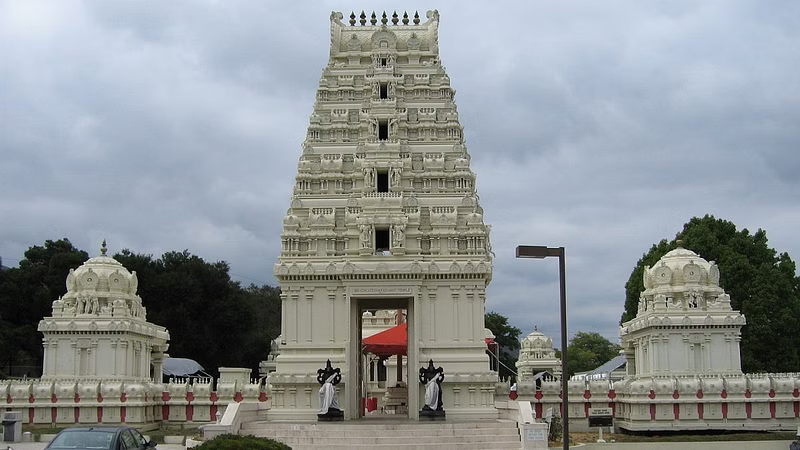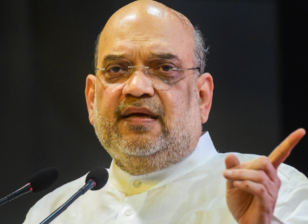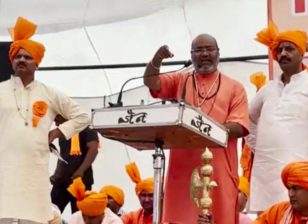Hindu-Americans are in denial about caste. It’s been in religious scriptures for long
Battle lines are being drawn in response to the emergence of caste fissures in the American workplace, thanks to California Civil Rights Department’s case against CISCO.
In a recent lawsuit against the California Civil Rights Department, the Hindu American Foundation asserted that, “a caste system or discrimination on its basis are in no way a legitimate part of Hindu beliefs, teachings, or practices.” It further alleged that the views of CRD are based on “misinformed and misrepresentative assertions about Hinduism by Western colonial occupation.”
The HAF’s complaint is a fallout from the CRD’s caste discrimination case against tech giant CISCO, on behalf of a Dalit employee who alleged systematic discrimination by two savarna (‘upper caste’) supervisors. In its complaint, the CRD had characterised the caste system as a “strict Hindu social and religious hierarchy.”
The Ambedkar King Study Circle has recorded people’s testimonies and individual experiences of how caste discrimination is practised by savarna Hindus in the United States.
The battle lines
The HAF is only one of several diaspora groups drawing their battle lines in response to public allegations of caste discrimination in the American workplace, including educational institutions.
Arrayed on the other side of the issue are several Dalit rights organisations, which are vigorously lobbying the state to add caste as a category of potential discrimination under Title VII of the Civil Rights Act of 1964, which currently lists race, colour, religion, sex, or national origin as “protected” categories. It is only when that happens, they contend, that employers will take the issue of caste discrimination seriously and implement policies to deal with it. CISCO had maintained that they did not act on complaints of caste discrimination because the practice “is not unlawful.”
The Ambedkar International Center (AIC) has filed an amicus brief in the CISCO case, challenging the HAF’s amicus brief, which had argued that the caste system is not part of Hinduism. Several diaspora organisations, including Hindus for Human Rights, have supported the AIC in its effort. The case is still in the courts.
The International Commission for Dalit Rights collaborated with Hindus for Human Rights in preparing an investigative report on caste discrimination in the temple/gurdwara building industry. This was prompted by the highly publicised allegation that the BAPS temple in New Jersey had mistreated its Dalit workers brought in from India. That case is still in the courts.
The Equality Labs (EL) has been at the forefront of the fight on behalf of Dalits and has been lobbying universities to ban discrimination on the basis of caste. Earlier this year, Cal State did just that, over the objections of a section of Indian-Americans who argued that caste discrimination no longer exists and that the university’s move would “provoke hate against Hindus on campus.”
Those arguments were directly challenged by the EL’s caste survey, which found that two out of three Dalits reported being treated unfairly at their American workplace. Also, the experience of Brandeis University, which was the first to ban caste discrimination in 2020, debunked the claim that banning caste discrimination on campus provokes hate against Hindus.
Dalits have not had the same success though in their lobbying efforts with tech giants. Google, under pressure from its large Hindu employee base, cancelled a scheduled workshop earlier this year on caste discrimination. EL’s executive director, Thenmozhi Soundararajan, was forced to deliver her planned remarks on the Internet – in effect challenging other Google employees to ask themselves what it is in her remarks that so threatened the Google management.
Google’s lead in refusing to hear about caste discrimination will likely push other tech companies to stonewall demands that caste discrimination be added to their HR policies. This is unfortunate.
On a third front are progressive Hindu groups like Hindus for Human Rights, who feel that their primary role in the caste debate is not only to play a supporting role to Dalit groups in their advocacy, but to also take the lead in educating the Hindu American community about the realities of caste discrimination, both in India and in America. This is particularly important in the case of American-born savarna Hindus, who are often told that caste is a thing of the past and that in any case it has nothing to do with Hinduism.
“Are you telling me that I should confuse my American–born children by talking about what’s happening in far-away India? Why should they learn about caste?” a speaker had said at a recent San Francisco Interfaith Council.
Is caste ‘inherent’ to Hinduism?
The HAF also alleged in its lawsuit against the CRD that “by wrongly claiming that caste, a caste system and caste-based discrimination are an inherent part of the Hindu religious belief and practice, the CRD would actually seem to encourage and possibly even require, employers to engage in the very discrimination that they purportedly seek to bar.”
These assertions are contradicted by several Hindu scriptures, which indicate that the caste system (Varna Dharma) has indeed been part of Hindu practices from time immemorial. Many contemporary Hindu religious leaders would also support the CRD’s characterisation of caste as a “strict Hindu social and religious hierarchy.”
Bhagavad Gita and caste
In the Bhagavad Gita (I: 41-44), the Pandava prince Arjuna shares his serious misgivings with Lord Krishna about going into a bloody war with his cousins, the Kauravas.
Killing them on the battlefield, he agonises, would leave the women of the family (presumably the widows) “corrupted,” leading to “caste-confusion” (transgression of caste boundaries by the women). That would bring disrepute to the families, Arjuna is afraid, and they will “everlastingly go to hell.”
Arjuna’s anguish and his fear of breaking caste rules clearly supports the CRD’s description of the caste system as a “strict hierarchy.”

Kanchi Shankaracharya and caste
In his opus Hindu Dharma, published in 1995, Chandrashekarendra Saraswati, the late Shankaracharya of the Kanchi Kamakoti Peetham, devotes several chapters under “The Vedic Religion and Varna Dharma” extolling the virtues of Varna Dharma as “superior in character to concepts like equality.”
Saraswati goes on to assert that “Manu-niti-sastra [Manusmrti] is the authority on dharma” and that it is Varna Dharma that may be the secret to the survival of Hinduism over the ages.
As far back as 1963, in an audience with Prof J.W. Elder of University of Wisconsin, Madison, Saraswati was categorical about the hereditary nature of the caste system: “According to the sastras, the Hindu community is divided into various castes. A particular duty is assigned to a particular caste. By heredity people come into a caste…” (see #1 and #2 for source)
The Shankaracharya’s view on caste supports the CRD’s description that caste identity is hereditary.
The Chinmaya Mission on caste
Unlike the Kanchi Shankaracharya, the Chinmaya Mission focuses more on a ‘feel-good’ version of the caste system.
In its lectures, it emphasises the one passage in the Bhagavad Gita (IV:13), where Krishna declares that it was he who created the four varnas, based on the three-fold gunas (attributes) of an individual: “tamas (darkness, delusion and ignorance), rajas (passion, desire and attachment), and sattva (light, harmony and balance).”
A caste system based on gunas was a pragmatic and admirable way to organise a society, their argument goes, where everyone was otherwise considered equal; but the system was corrupted in more recent times by the British colonial administration to make it inflexible and unequal.
This line of argument often elides passages attributed to Arjuna (see above), which would indicate that caste strictures were rigid and unfair even in the days of the Bhagavad Gita.
Sadly, in extolling a guna-based caste system, which may have never existed in reality, the Chinmaya Mission perpetuates stereotypes of the four varnas, virtually condemning 52 percent of India’s populace (the so-called Shudras) by associating them with the Tamasik qualities of inertia, lethargy, indolence, and indifference. This is unacceptable.
Nevertheless, the Chinmaya Mission does not distance Hinduism from caste, as the HAF attempts to do.
CRD’s focus
The CRD’s focus in its complaint is not the origin of the caste system, but the alleged discrimination against a Dalit worker at the workplace. Its hope is to legally compel employers to recognise that caste discrimination is real and to require them to craft policies that can deal with it, just as they now deal with other forms of discrimination. Their long term hope is that caste will be added as another category of potential discrimination to the United States’ civil rights laws.
The HAF, in ignoring the essence of the CRD’s complaint, is indulging in self-victimisation – alleging that the entire Hindu-American community may become victims of any anti-caste-discrimination policies that may be adopted by the state.
Vision of a casteless Hinduism
In the history of Hindu thought, there have been many reformers who condemned caste hierarchy and sought to create a more egalitarian and less caste-conscious Hindu society. The list includes Saint Ramanuja, Basavanna, Akka Mahadevi, Sant Kabir, among others.
Each of them was driven by the sincere belief that a Hindu practice without caste strictures was possible and desirable. But, unfortunately, each of their efforts to imagine a casteless Hindu society were limited and ultimately overwhelmed by the sheer power of institutionalised caste hierarchy.
Today, however, the very fact that some of the Hindu diasporic communities in countries like South Africa and Suriname have had no institutional memories of caste and are yet devout practising Hindus shows that casteless Hindu societies already exist in some parts of the world.
A millennia later, in a globalised world, the Hindus for Human Rights believes that a progressive Hinduism without a caste hierarchy is not only feasible, but also badly needed today. However, that can only come about when privileged sections of Hindu society take ownership for the caste system as it operates today, instead of running away from it. Continuing to debate how and when the caste system began and who made it inflexible do little to solve today’s caste discrimination and caste oppression.
Moving forward
The HAF repeatedly claims that it vociferously opposes all forms of discrimination, including caste discrimination. Yet, its actions on the ground seem designed more to shield privileged ‘upper caste’ Hindu-Americans than to actively fight caste discrimination.
The CRD is on the right track in exposing the emergence of caste biases at the American workplace, a move that is likely to be supported by a majority of Hindus in India, consisting of Bahujans, Dalits, and Adivasis (more than 70% of India), if given a chance. I hope that all the efforts by Dalit rights groups, supported by progressive Hindus and others, will bring about a better public understanding of caste discrimination and will lead to ways in which executives and supervisors at the workplace and our next generations could be sensitised to such discrimination.
Raju Rajagopal is co-founder of the Hindus for Human Rights (@Hindus4HR). Views are personal.
(Edited by Prashant)
This article originally posted in The Print





